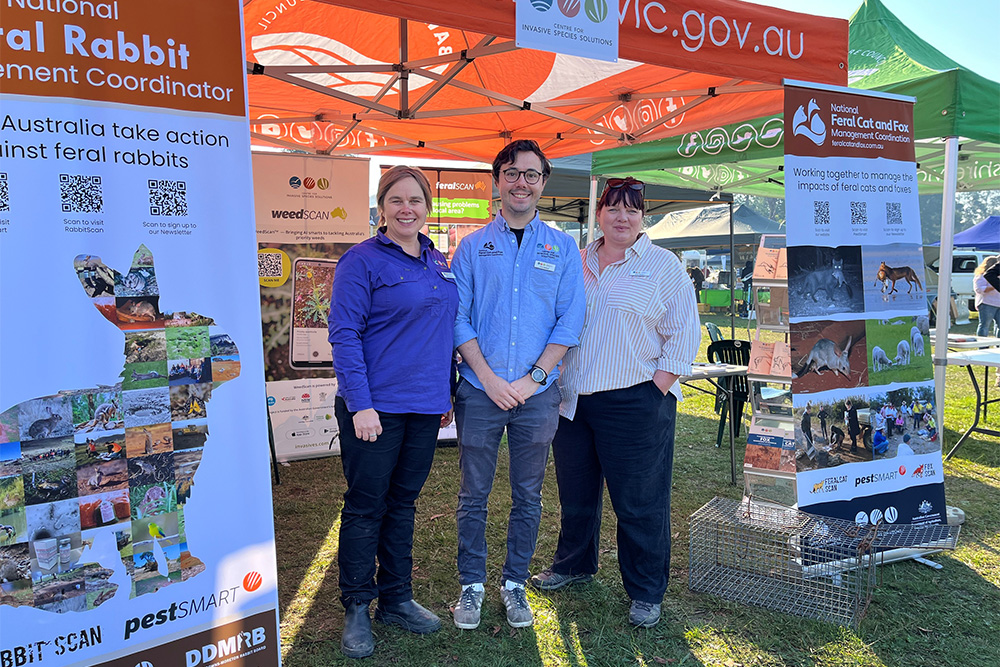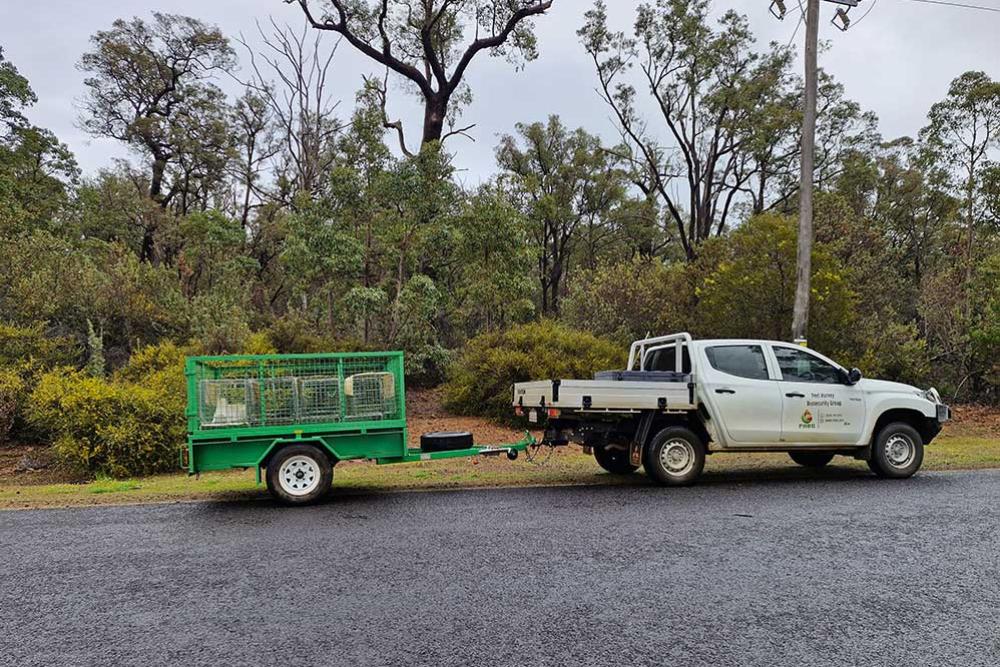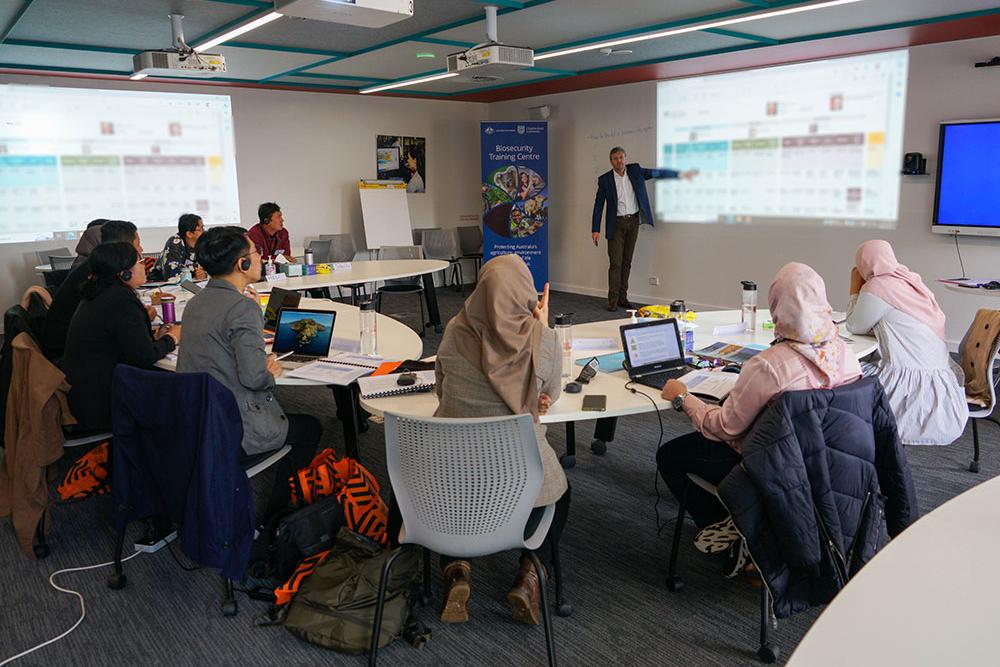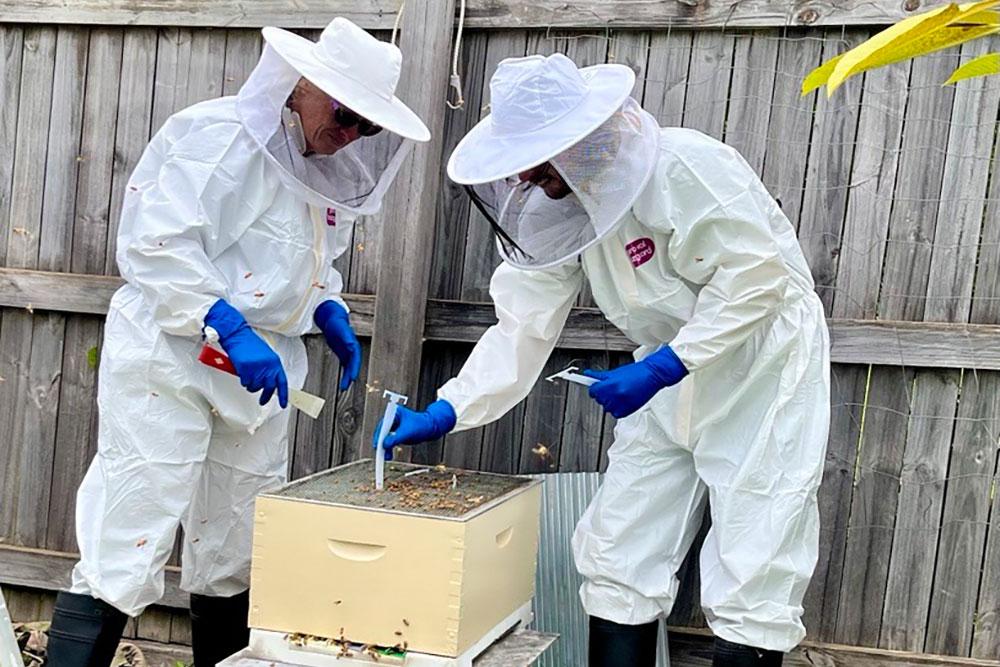Australia’s first National Rabbit Management Coordinator, Heidi Kleinert, hosted by the Centre for Invasive Species Solutions, was appointed in December 2024. The establishment of this role recognises the ongoing need to manage feral rabbits and the value of national coordinated actions to drive efficiencies and improvements in management.
Rabbits are one of Australia’s most costly and environmentally damaging pests. They cause an estimated $197 million in agricultural losses annually and threaten over 320 native species, including the Malleefowl, Orange-bellied Parrot, and various endangered wallabies and orchids.
Rabbits damage crops and vegetation cover, out-compete native species, alter ecological communities, contribute to soil erosion and remove critical habitat for native animals. In urban and peri-urban areas, rabbits can also damage gardens, sportsgrounds, cemeteries, and culturally significant sites.
The role aims to develop land manager expertise by providing necessary training and supporting coordinated action and collaboration. To achieve this, Heidi connects with a wide range of stakeholders, from pest management groups to government agencies, to increase capability and adoption of best practice rabbit management and improve application of existing control tools to drive down rabbit impacts on agricultural productivity, the environment, and threatened species.
Heidi is also enhancing the PestSmart rabbit toolkit and working with key stakeholders to review nationally agreed codes of practice and standard operating procedures. These efforts will ensure rabbit management strategies are effective, humane, and aligned with long-term ecological recovery goals.
The role complements existing national coordination efforts for other vertebrate pests such as feral pigs, wild dogs, feral cats and foxes and feral deer. National coordinators work with governments, industry and community groups to help manage negative impacts from these species where they are occurring.
This national initiative is supported by the Australian Government’s Department of Agriculture, Fisheries and Forestry, Rabbit Free Australia, Darling Downs Moreton Rabbit Board, and the NSW Department of Primary Industries and Regional Development.
Below is a list of resources to help manage feral rabbits. As states and territories are responsible for legislating land manager requirements for established pests and weed in their particular jurisdictions, it’s important to check your relevant jurisdiction’s advice for managing rabbits on your property.
- PestSmart Toolkit: Practical guides and factsheets for planning and managing rabbit control.
- RabbitScan: A free, easy-to-use tool for recording rabbit sightings, damage, and control efforts.
- Glovebox Guide for Managing Rabbits: Covers rabbit biology, damage, control tools, and legislation.
If you would like to stay informed on nationally coordinated rabbit management, please sign up to the National Feral Rabbit Management Coordinator newsletter. The most recent edition of this newsletter was published in August 2025.




